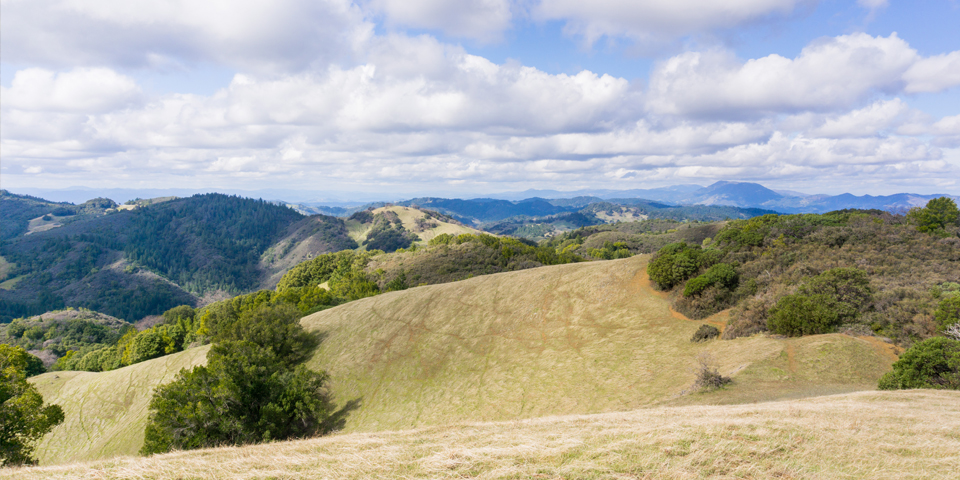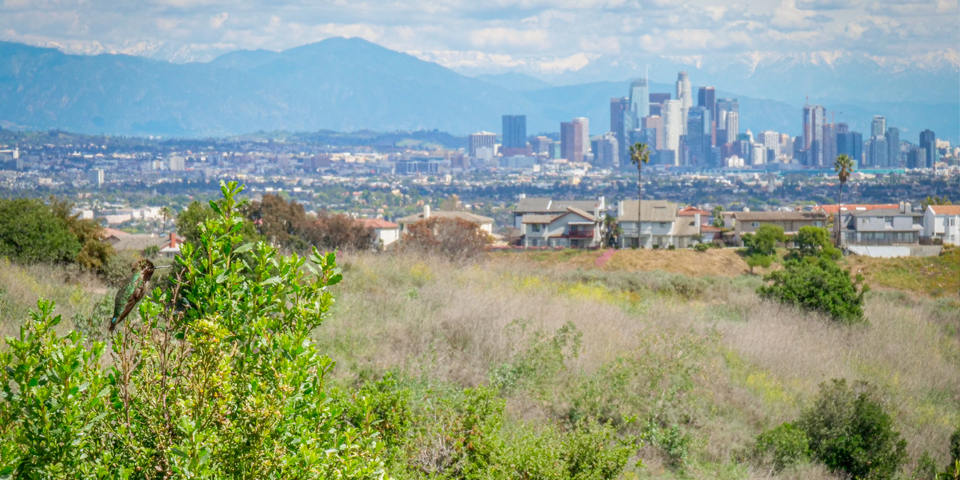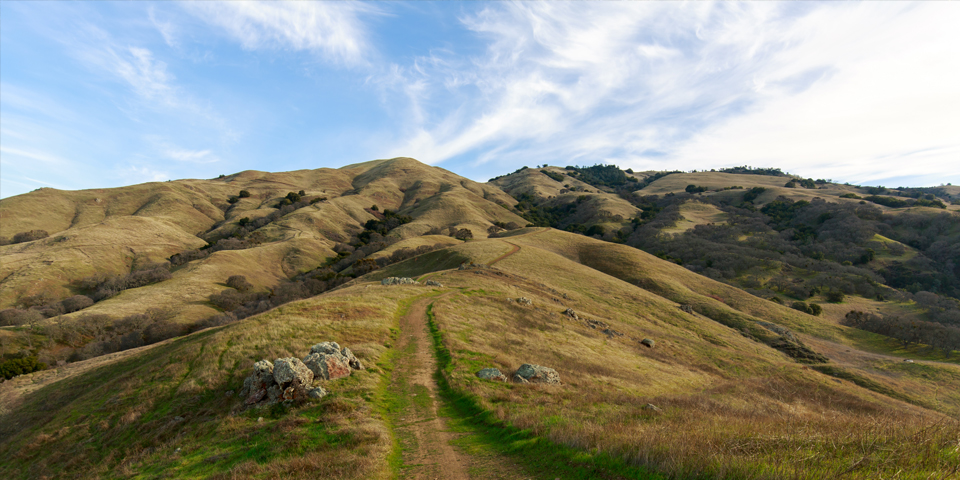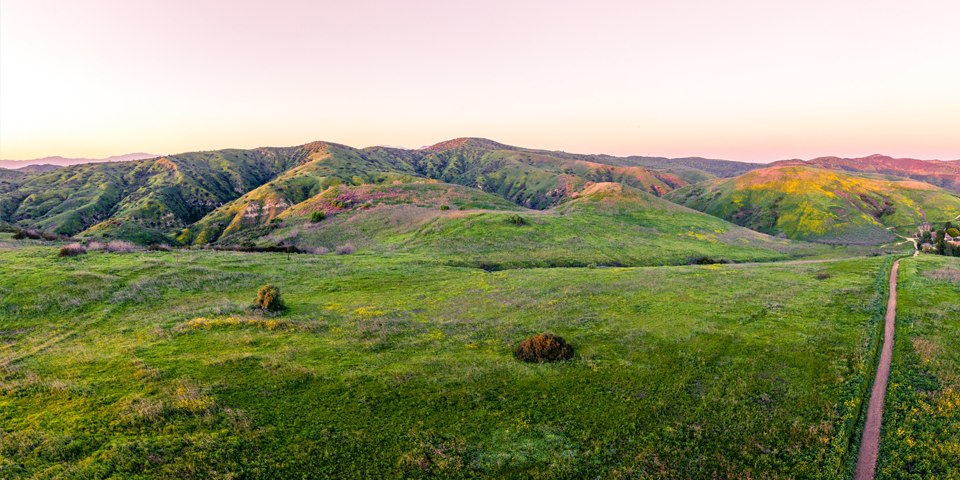Announcing our Wildfire Resiliency and Prevention Grantees
In response to the horrifically destructive 2020 California wildfires, we are thrilled to be able to provide 15 amazing state parks and park partner organizations with grants. These grants will help restore fragile habitats and rebuild parks while helping parks become more resilient to climate change. The Wildfire Resiliency and Prevention Grant opportunity includes $135,0917 in grant funding that supports programs or projects in state parks in one or more of the following four categories:
-
Assessment – Assess fire impact and climate threats to the park, risks to natural habitats, biodiversity, and parklands (both built and natural environments).
-
Restoration – Restore the natural and built environments impacted by fires and other climate change events.
-
Preparedness – Prepare for the real threat of climate change in parks and build a climate resilient California.
-
Education – Raise awareness of the impact of climate change and ways to engage in climate resilience activities.
In addition to focusing on the work above, California State Parks Foundation recognizes that climate change disproportionately affects low-income communities and communities of color. To address this, we considered projects and programs that work collaboratively with organizations and leaders within these communities to address the issue of climate resiliency. We also took into consideration the CalEnviroScreen score of the parks these projects and programs take place in, as well as the visitorshed, a natural collection area for visitors defined by the distance that people regularly walk, bike, or drive for social or recreational purposes, they would serve.
Meet our Wildfire Resiliency and Prevention grantees and get an inside look at their upcoming projects
Poppy Reserve Mojave Desert Interpretive Association | Arthur B. Ripley State Park | $10,000 | Lake Fire (2020)
Project: Restoration will include de-compacting soils that were disturbed from fire lines, replanting and restoring Joshua and Juniper trees that have been destroyed or damaged, mechanical thinning of junipers to enhance growth and mitigate pest encroachment, and weeding invasive plants that may pose a threat to the local flora.
Impacts: This work will help maintain genetic variance among local flora and will assist a self-subsistent ecosystem. In addition, the mechanical thinning of dying or deceased California junipers will provide an overall diversity of vegetation and improve juniper health within the park.
Stewards of the Coast and Redwoods | Armstrong Redwoods State Natural Reserve and Austin Creek State Recreation Area | $10,000 | Walbridge Fire (2020)
Project: This project will focus on restoration efforts needed to reopen the parks and provide safe conditions for the 1 million visitors who enjoy the parks annually. Restoration will include rebuilding infrastructure, managing hundreds of downed trees, rebuilding fencing, re-establishing trail systems, and continuing to fuel reduction efforts.
Impacts: California’s redwood forests play a key role in relation to climate change. Research carried out by Save the Redwoods League and partners has confirmed “the vital importance of protecting and restoring these forests throughout their natural range, not least because of their incredible carbon storage capacity and proven viability as a long-term carbon sink.”
Sonoma Ecology Center | Sugarloaf Ridge State Park | $10,000 | Tubbs Fire (2017), Glass Fire (2020)
Project: Supporting the newly developed Fire Recovery Community Science and Stewardship Program, this grant will support assessment and management of post-fire invasive vegetation and soil erosion and assist with reducing wildfire risk to park neighbors in Adobe Canyon. The program will also work to increase the community's understanding and resilience to climate and fire hazards while maintaining or enhancing the health of the local watersheds and ecosystems.
Impacts: This project will use data from the 2017 fires and other historic fires in the area to help evaluate adaptive demonstration projects such as prescribed fire, grazing, invasive species monitoring and removal, and forest thinning for fuels management.
South Yuba River Citizens League | South Yuba River State Park | $9,992 | Jones Fire (2020)
Project: This project will quantify impacts of the Jones Fire and associated firefighting actions on Rush Creek and the South Yuba River.
Impacts: By being able to predict under what hydrologic conditions a given water quality impact is expected, California state parks will be better prepared to manage the potential negative impacts. The information this project generates will help parks manage its river resources by being able to anticipate when water quality issues may arise after a fire. Gathering this vital water quality information can help inform decision makers on how to best protect our parks for many years to come and develop best practices for water quality monitoring for future fire events in the Yuba Watershed.
Los Angeles Audubon Society | Baldwin Hills Scenic Overlook State Park and Kenneth Hahn State Recreation Area | $10,000
Project: This project will recruit approximately 50 high school and 5 college interns from adjacent communities, including the South Los Angeles, to the Climate Action Youth Network. Student interns will participate in weekly climate action workshops to learn about the threat of climate change. Students will expand their knowledge-base working with habitat restoration ecologists, gain work experience for job or college applications, and have access to a pipeline for possible future employment. With guidance, student interns will develop plans to restore native habitat in the Baldwin Hills Parklands and lead community volunteers in at least 2 habitat restoration events to remove invasive species in the parks to reduce the risk of wildfire ignition and spread, and plant native coastal sage scrub that will improve slope stability, as well as air and soil quality through carbon sequestration.
Impacts: The Climate Action Youth Network will empower youth and their communities to act with information about climate change and wildfire prevention.
The Program will support a climate resilient park system reducing fire risk, increase carbon sequestration, increase geological stability, and increase aesthetic values. The Program will also maximize safe and equitable access to the park through meaningful community outreach, targeting the adjacent underserved communities and other neighborhoods that suffer from environmental injustice.
California State Parks, Bay Area District Natural Resource | Trione-Annadel State Park and Sugarloaf Ridge State Park | $9,989 | Glass Fire (2020)
Project: This project will develop an “Early Detection and Rapid Response” approach to climate resiliency. Invasive plants will be mapped and treated in disturbed areas in the two parks by controlling the most highly invasive species early on in their invasion trajectories, creating a more efficient, effective, and cheaper approach to control.
Impacts: Protecting the biodiversity in parks will help species adapt in the evolutionary sense and increase the chance that the ecosystem functions supported by biodiversity can remain intact. This work will also retain the value of these parks as places for education, research, and inspiration under a changing climate.
Anahuak Youth Sports Association | Rio de Los Angeles State Park, Los Angeles State Historic Park, Bowtie Parcel | $10,000
Project: This project will focus on educating Latino youth and families about urban climate resilience through transforming brownfields into parks. Through engaging Anahuak’s youth and families with bilingual educational campaign and materials this project will help address fears the community has around the Brownsfield to parks conversion and create an understanding around this crucial solution to create climate resilient cities. The educational campaign and products created will be replicable in other low-income, Latino communities throughout California.
Impact: Through creating a replicable educational campaign and materials, this project will support building climate resilient urban parks in former greenhouse gas generating, industrial brownfields and increasing climate resilience in surrounding communities. It will also demonstrate how Latino communities can be engaged in co-creating understanding of the climate threats to our parks and communities, the opportunity that parks present to increase climate resilience, and the crucial role that Latino communities can play in supporting this resilient future.
California State Parks | Mount Diablo State Park | $5,420 | Deer Zone Fire (2020)
Project: This project will establish a plant nursery to preserve the genetics of the threatened Mount Diablo Coulter Pines. The nursery will be capable of processing, storing, and propagating seeds from the population of Coulter pines in order to preserve its genetic diversity.
Impacts: This project will help create a more resilient population of the unique Coulter pine forests within Mount Diablo State Park. Coulter pine forest habitats promotes biodiversity of fire-adapted species, crucial wildlife habitat, and is important for carbon sequestration. With wildfires increasing in frequency and severity throughout California and the warming climate, it is essential to protect species that are fire-adaptive and relatively drought tolerant.
Anderson Marsh Interpretive Association | Anderson Marsh State Historic Park | $9,026 | Clayton Fire (2016), LNU Lightning Complex Fire (2020)
Project: This project will restore and rehabilitate the 3.2-acre entrance meadow which first greets visitors to the park located at Anderson Marsh State Historic Park.
Impacts: This project will help make the park more resilient to the ever-increasing wildfires that are being caused by climate change and provide a useful blueprint for replication at scale throughout the California state park system.
California State Parks, Sierra District | Ed Z'Berg Sugar Pine Point State Park | $6,260
Project: This project will develop the Parks Online Resources for Teachers and Students (PORTS) Fire Ecology Program. The virtual programming will focus on fire ecology in the Sierra District and describe local ecology, indigenous practices, fire history, and modern efforts to build climate-resilient forests, highlighting 20+ years of prescribed fire management in Ed Z'Berg Sugar Pine Point State Park.
Impacts: This program will connect with youth in California and beyond and build the next generation of park stewards. The program will also help establish a framework for all state parks interested in developing a PORTS program focused on fire ecology.
California Native Plant Society | Big Basin Redwoods State Park and Henry W. Coe State Park | $10,000 | CZU Lightning Complex Fire (2020)
Project: This project will focus on post-fire vegetation surveying in California state parks in Santa Cruz and Santa Clara Counties. As a part of a coordinated effort with the Department of Parks and Recreation, University of California at Santa Cruz, San Mateo Resource Conservation District, Amah Mutsun Land Trust, and other partners, plant community types will be targeted that benefit from post-fire vegetation surveying including areas of varying burn severities.
Impacts: Assessing the fire impacts and vulnerability of priority vegetation types on California state park lands is an important step toward more resilient systems. This information will provide a baseline for informing fine-scale vegetation mapping and monitoring over time through the challenges of our changing climate and will allow land managers at California state parks to evaluate and adapt strategies for sensitive habitats in this Central Coast region.
Gold Country Avian Studies | Big Basin Redwoods State Park | $10,000 | CZU Lightning Complex Fire (2020)
Project & Description: This project will work to identify the impact of wildfires on Hermit Thrushes in Big Basin Redwoods State Park. The Hermit Thrush, a migratory songbird revered for its complex and ethereal song, typically breeds in relatively stable numbers in Big Basin Redwoods State Park. However, the CZU Lightning Complex fire, which burned 97% of the park, may have drastically affected the species’ local population. This project will work to assess the extent to which the Hermit Thrush population in Big Basin was affected by the fire and collect blood samples from Hermit Thrushes breeding in Big Basin Redwood State Park and in one or more California state parks farther north for genetic comparison, and initiate genetic analyses to determine the extent to which Big Basin Thrushes are distinct from more northerly populations.
Impacts: This research will create an opportunity for California state parks to serve as an important living laboratory. Results could inform policy decisions regarding wildlife conservation and how climate-change induced fires are managed and planned for in the future. Any information gained regarding the genetic distinctiveness of the Hermit Thrush and the species’ response to fire will help California state parks preserve the species and the magic of a visit to California’s treasured coast redwood forests.
Chino Hills State Park | Canyon 1 and Canyon 2 Fires (2017), Blue Ridge Fire (2020)
Chino Hills State Park is working closely with Hills For Everyone and Chino Hills State Park Interpretive Association to prioritize park needs and support one another’s projects while the park recovers from the Blue Ridge Fire, which burned 8,800 acres of the park.
Hills for Everyone | $10,000
Project & Description:
Restoration work will restore the entrance to the Chino Hills State Park campground, specifically rebuilding the campground sign and replanting native vegetation. Work will also include replacing trail fencing which burned in October 2020.
Impacts: These projects will protect access, restore impacts from recent fires, improve climate resiliency, support wayfinding within the park, and create defensible space. The native plant restoration near the campground will result in a healthy and diverse display of plants found in coastal sage scrub habitats.
Chino Hills State Park Interpretive Association | $7,450
Project & Description:
This project will focus on educating the public about the natural fire cycle and native plants. Installation of new fire cycle panels will teach every visitor to the Rolling M Ranch about the importance of controlling fire, its impacts from climate change, and what a healthy native landscape looks like.
Impacts: This project will help visitors understand native plants and their importance to the park's ecosystem making them value the park and the plants and wildlife within it.
Chino Hills State Park | $8,500
Project & Description:
This project will work to restore the pedestrian Campground Bridge that burned. The damaged bridge links horse camp to the amphitheater and regular campground. Thermogel, a liquid that can be applied prior to a fire in order to prevent a structure from burning, will also be purchased to prepare for the next wildfire.
Impacts: It is known that fire will occur again in the park. We are implementing the use of Thermogel to prepare for the next fire event and reduce the possibility of the bridge burning again.
Support for our Wildfire Resiliency and Prevention Fund was generously provided by Edison International, as well as our California State Parks Foundation members and donors.





